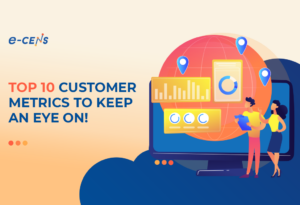Let’s start today’s post with some numbers. Any idea what the following percentages might represent?
- 71%
- 5%
- 57%
- 21%
Save your response, we’ll get back to this later. Over the last few weeks, E-Cens’ clients have been contacting me about ITP 2.1.
What is ITP?
Intelligent Tracking Prevention (ITP) was introduced by Apple in 2017 to limit cross-screen tracking in iOS and Safari. ITP 2.1 takes this further by removing most first-party cookies after just seven days. Currently, in beta, there hasn’t been an official date set for when this is rolling out to the market. What does this mean for you? Well, it’s related to our percentages from earlier:
- 71% – global share of Google Chrome desktop browsers
- 5% – global share of Safari desktop browsers
- 57% – global share of Google Chrome mobile browers
- 21% – global share of Safari mobile browsers
Using these stats as an initial data point, start by assessing ITP 2.1 impacts on your business: How many of your customers and prospects use Safari? Once you set an initial baseline of your Safari customer and prospect base, you’ll be able to forecast potential financial and measurement impacts and start to educate your stakeholders and executives about the ITP 2.1 issue. This will help you get ahead of any concerns that may arise as the potential impacts of the ITP 2.1 concept become more widely publicized, and perhaps overblown. Likely you have already been dealing with privacy and General Data Protection Regulation (GDPR) issues, so this should be a continuation of an ongoing digital policy discussion in your organization. In any case, it’s important to communicate that for right now, ITP 2.1 only affects Safari browsers. How can you forecast the near-term impacts on your business from ITP 2.1? Not all impacts carry the same downside. Prioritize based on near and long term risks to revenue, customer experience, and data quality. Conduct analysis on the Safari user segments to determine baseline user engagement. This will help guide your development and use of new segmentation models for campaigns, testing and data governance. Consider this an opportunity to begin living in a new world where the data that you collect from users will probably need to be more of an “opt-in” nature.
What happens next?
For data collection, there don’t seem to be a lot of great workaround options. Adobe and Google are trying to sort this out. There is potential for higher unique visitor counts of course. However, if you do the baseline analytics work to understand how Safari visitors interact with your web sites and mobile apps you’ll be able to do reconciliations to know the variances. The biggest impacts will be on retargeting and personalization because there is the potential for the same anonymous user more generic messaging than those who have authenticated to your site or app. As I mentioned above, this means you’ll need to develop strategies to secure opt-in and authentication. Ultimately this will be better for you and your customer in developing more meaningful digital experience over time. This is also a good time to mention the importance of other methods to evaluate and assess customer experiences – such as voice-of-the-customer, social media analytics, and CRM. These can all be used together to create a holistic customer data management system through platforms such as BigQuery. Looking ahead, ITP 2.1 continues the path we’re on to more privacy and user control over data. This could suggest increasing relevance for Google’s Ads Data Hub (ADH), which stores and anonymizes personal identifiable information (PII) for any user that has signed into any Google service or application (i.e. Gmail, YouTube, Maps, etc). ADH provides the ability to stitch user data across YouTube and Google Advertising Networks to do advanced analysis on campaigns and multi-channel attribution models.
Closing Thoughts
Clearly, we’re at an interesting point in the evolution of digital marketing and analytics. For those with long memories – like me – a world without cookies is not the end of the world. We just need to make sure we continue to experiment with new ideas and new ways to create content and messaging – while also and finding new ways to analyze how this resonates with our customers. As always, I look forward to hearing your thoughts on how we move ahead. I look forward to helping in any way I can.

This post was originally written by
Feras Alhlou
President & Co-Founder, e-nor




